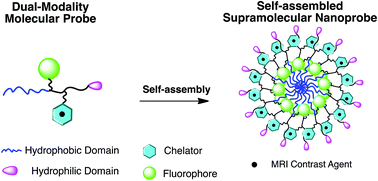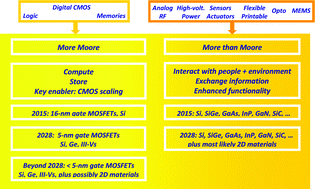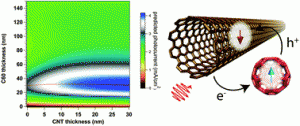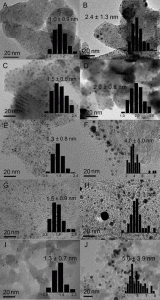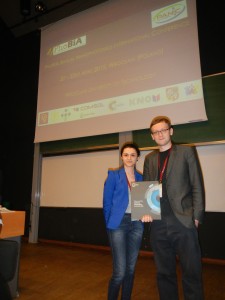
Core–shell InGaN/GaN nanowire light emitting diodes analyzed by electron beam induced current microscopy and cathodoluminescence mapping
A new article presented by Tchernycheva et al. published in Nanoscale reports on the characterisation of core-shell InGaN/GaN nanowires using electron beam induced current (EBIC) microscopy and cathodoluminescence mapping (CL). Using a combination of both techniques allowed the authors to map the electrical and light emitting properties of the nanostructures both laterally and vertically.
The basic structures used for the experiments were hexagonal nanowires formed by a sequence of 150nm p-GaN / AlGaN / 7 nm InGaN / 200 nm n-GaN / 200 nm GaN. According to the authors, top-view EBIC mapping indicated electrically active regions at the circumference of the nanostructures with an inactive core area. The inactive core is explained by the absence of quantum wells at the m-planes which form the single facet sides at the top of the devices.
By mechanical cleaving, cross-sectional images of the nanostructures were obtained. EBIC mapping was found to indicate the exact position of the p-n-junction within the structures. Furthermore, vertical EBIC signal variations at the junction within the devices were also noted. By employing CL measurements, the drop in electrical activity of the structures was linked to an increase in the optical activity. The authors explain this finding by a variation of the semiconductor layer composition.
Using both findings, the lateral homogeneity of the electrical activity and the vertical variation, further characterisation and optimization of the nanowires are enabled to increase the light output and overall luminous efficiency.
Core–shell InGaN/GaN nanowire light emitting diodes analyzed by electron beam induced current microscopy and cathodoluminescence mapping
M. Tchernycheva, V. Neplokh, H. Zhang, P. Lavenus, L. Rigutti, F. Bayle, F. H. Julien, A. Babichev, G. Jacopin, L. Largeau, R. Ciechonski, G. Vescovi and O. Kryliouk
Nanoscale, 2015, Advance Article. DOI: 10.1039/C5NR00623F
Sebastian Axmann is a guest web-writer for the Nanoscale blog. His interests comprise manufacturing and metrology of nanostructures as well as their usage in current semiconductor devices. He also posts links to interesting research articles on Twitter: @SebastianAxmann.












